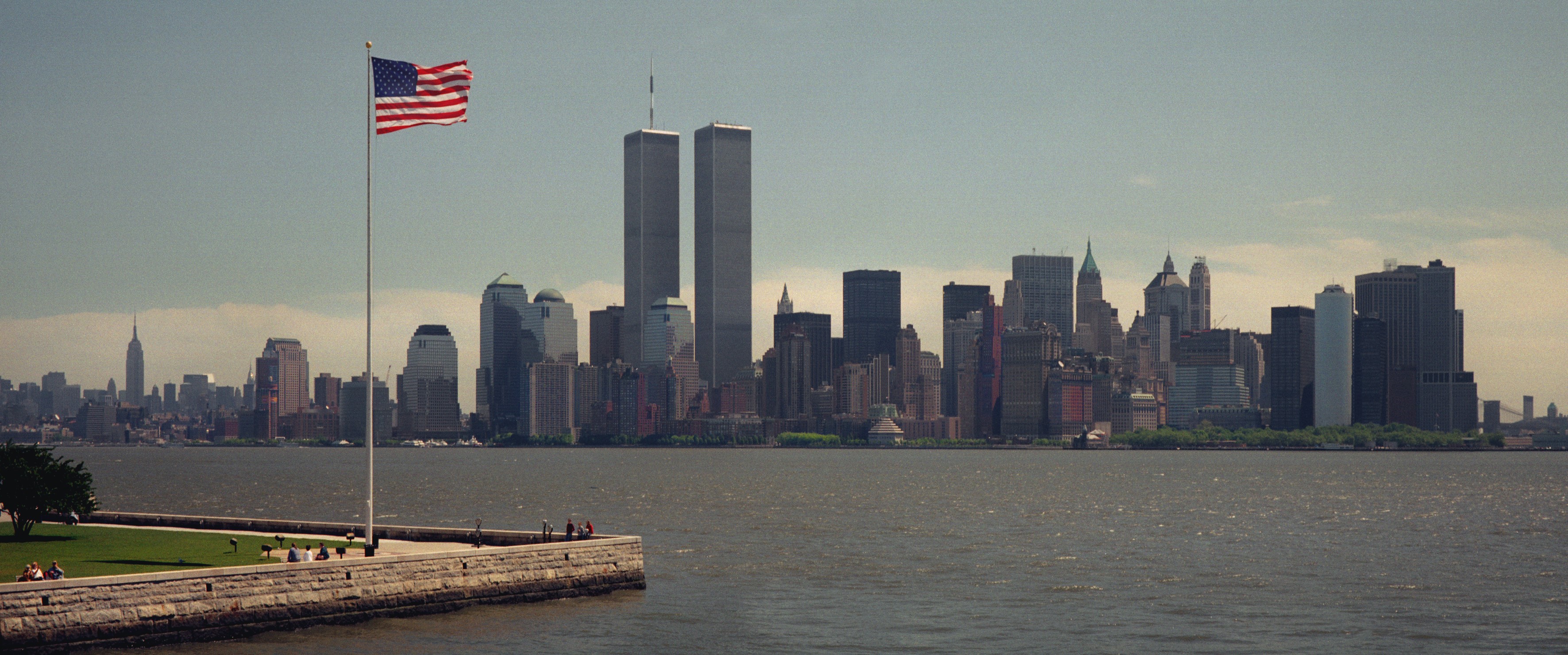Nat Geo's "9/11: One Day in America" Focuses on Random Acts of Kindness in the Midst of Evil

Most of us could not say with certainty where we were and what we were doing three weeks ago Tuesday without consulting a calendar. Yet if you were old enough to be cognizant, you know exactly what you were doing on a Tuesday 20 years ago. For those in the New York area, the cloudless day was exquisite. Summer's mugginess had faded, kids were back in school, and the glory that was a perfect early fall morning dawned bright on September 11, 2001. Then, at 8:46 a.m., all hell broke loose, and our world forever changed.
Every year that day carries with it the heaviness of honoring the 2,997 victims the terrorists killed. Since the day is etched into our collective memory, perhaps even into a collective PTSD, it's legitimate to ask, why watch 9/11: One Day in America? The six-part documentary aired over four consecutive nights on National Geographic, is currently streaming on Hulu, and will re-air tonight. Granted, this is a profoundly upsetting production, but it is also one of the most important. Despite knowing all about the tragedy, it's certain to leave viewers sobbing. So, why dedicate the time, and what can you learn?
That's a question David Glover -- executive producer and co-founder of 72 Films, which made the film in collaboration with the 9/11 Memorial and Museum -- mulled over with his team as they set out to make this three years ago. His team found footage of people during and just after the attacks.
"There's a possibility of looking at an event, almost like a God's-eye view on an event," Glover said, speaking from London. "You are trying to piece together all the different stories that kind of crisscross each other."
The nearly seven hours dissect the day chronologically, beginning with that earth-shattering moment when the first plane crashed into the North Tower of the World Trade Center at 8:46 a.m. The attack continued with the South Tower struck at 9:03 a.m. At 9:37 a.m., the Pentagon was hit. At 9:59, the South Tower collapsed. At 10:03, another plane crashed near Shanksville, PA, after passengers fought the hijackers, and at 10:28 a.m., the North Tower collapsed. But it goes beyond the infamous 102 minutes that changed the world.
While the film shows people in shock, coated in the remains of the buildings they escaped, it also shows them today, as they recall who helped them and whom they helped. This reveals an aspect of the event that we don't often consider when we think of the terrorist attacks: Random acts of kindness were everywhere.
"We often say people find out who they are when they're really tested," Glover explained. "I suppose that anyone could sort of talk a good game about who they are. If push came to shove, morally what would we do? People can say that they're this or that, but you only really find out when they're tested. I suppose I think that 9/11 tested people in horrendous and very, very intense ways, but I knew enough about 9/11 to know that in those moments, some of the very best of humanity was shining through."
Among those whose humanity shone so brightly are Kathy Comerford of Long Island and Ron Clifford of New Jersey. That morning, Comerford was running a Morgan Stanley meeting on the 70th floor of the South Tower. When the first plane hit, people in the South Tower started to evacuate, only to be told to return to work. It was just an accident in the other building, went the initial reports.
Comerford refused. The head of her company's security had trained the employees well. He was certain another attack would happen, basing this presumption on the World Trade Center bombing of Feb. 26, 1993, when six were killed.
That security executive died helping others on 9/11.
On Comerford's descent, she had stopped on the 44th floor, just as the second plane hit. "I was blown out of my shoes," she said. "I dislocated my shoulder and hurt my neck, but you don't feel it at that point. All I kept thinking of was the movie Die Hard, where they shoot out all the glass, and he's walking on the broken glass, and his feet are all cut, and I kept thinking, 'I gotta find my shoes because I can't go down all these stairs if my feet are bleeding.' So, I did get up, and I found my shoes." She also found a large cup of ice and figured that it would come in handy.
Comerford continued walking down. Along the way, she encountered a woman having an asthma attack, who said she could not go on. A mother of three, Comerford had an inhaler in her purse. She told the woman to take some breaths and keep going.
As firefighters ran upstairs -- 343 FDNY heroes would perish that day -- Comerford kept going down, giving out ice along the way. She recalls a man with prosthetic legs had also given up, and Comerford watched two men carry him down hundreds of stairs. Once on the street, she helped a woman into an ambulance and went to the hospital with her. There, she met a man who had no idea how to get home to Long Island. She knew she would figure it out and told him to stick with her.
The next day Comerford attended Mass twice at her kids' parochial and Catholic high schools to show them she survived and that she was okay, albeit in a brace and a bit worse for the wear.
"I went back to the city, and I worked because my philosophy was on not letting those terrorists win," she said when interviewed.
Catholic prayers were also the solace Ron Clifford offered to a stranger. Raised in Ireland, Clifford was an architect who fell in love with the Twin Towers the first time he saw them just a few years after their 1973 completion.
Whenever people visited New York, Clifford took them to experience the majesty of those buildings. On the morning of September 11, he had a meeting at the Marriott, the hotel that was nestled between the towers. He took the ferry from his New Jersey home and arrived early because it was an important meeting and because he so loved being there.
Clifford felt a rumble. And just after, a severely burned woman -- a fireball of jet fuel had engulfed her -- staggered into the lobby where he was.
The plane that hit the North Tower had Clifford's close friend on it. She was heading to Los Angeles for a vacation with Clifford's sister and niece. The second plane crashed into the South Tower while Clifford was saying a Hail Mary and the Lord's Prayer with Jennieann Maffeo, the woman who was so badly burned.
On board were his sister and four-year-old niece.
Once Clifford saw Maffeo into an ambulance -- shown in the series since it amazingly tracked down everyone on that day -- he eventually made it home, again on a ferry. He looked across the river, aghast at the fires and ruins of the buildings he so loved. Once home, his brother-in-law called to tell him what had happened. Clifford found himself on his knees, crying.
He visited Maffeo in the hospital, where she clung to life for 41 days before dying as a result of the terrorist attack. As he reflects on that day and his kindnesses to a stranger, Clifford says very quietly, "That's just what you do; that's what a human being does."
Having spent three years working on this and having returned to New York City the moment he could just after the attacks, Glover remains extremely touched by these random acts of kindness.
"[They're] sort of inspirational truths about human nature," Glover said. "Not just New Yorkers, but definitely New Yorkers … the whole human race can be proud of what people did that day. One of things I love about New York is it's incredibly multicultural. If you had to pick a city to represent the human race, New York would be a pretty good choice.
"This horrible attack happened to New Yorkers, and we get to see all different kinds of people respond, and all different kinds of people show unbelievable capacity for kindness and altruism, often risking their own lives to save others, both the professionals and the other people," Glover concluded. "Ultimately they are very, very uplifting stories."
Click the social buttons to share this content with your friends and colleagues.
The opinions and points of view expressed in this content are exclusively the views of the author and/or subject(s) and do not necessarily represent the views of MediaVillage.com/MyersBizNet, Inc. management or associated writers.


